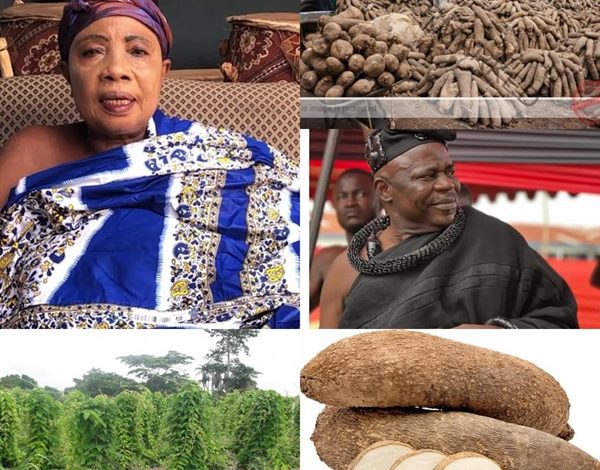The ancient history of how Ashantis discovered yam at Ejura and later named it ‘bayere’

The history of how Asantes discovered yam is a tale that dates back to the 16th century, originating from the sacred land of Ejura in the Asante Kingdom.
According to Nana Akua Tiwaa II, the queen mother of Ejura, hunters from Ejura were the first to discover yam.
In ancient days, hunters would build temporary shelters in the forest, known as “Ennanso,” where they would prepare and send game back home.
The Accidental Discovery
One such hunter, Nana Boakye, from the Ejura royal lineage, stumbled upon wild boars digging up something from the ground.
After killing the boars, he discovered the edible root, which they initially called “Sekyerene” and later came to be known as(Bayere) yam.
The hunters brought some of the yams back home, tested its edibility, and began consuming it.
The Traditional Preparation and Sharing
In the olden days, yam was prepared exclusively by the wife of the hunter’s son, “Boffuo Ba Yere.” The dish was then shared among household and community members.
As people enjoyed the food, they would identify its source, saying “Boffuo Ba Yere no Aduane,” meaning “the wife of the hunter’s food.” Over time, the people came to call it “Bayere.”
The Evolution of Yam
The wild yam, initially known as “Sekyere” and later “Bayere,” has undergone significant changes, giving rise to various yam varieties, including: Pona,Serwaa, Dente, Esum ne Hyen, Afase, Apoka, Afum
The Ejura Sekyerene Festival
To commemorate the discovery of yam, the people of Ejura celebrate the Ejura Sekyerene (Yam) or Bayere festival every year, typically in October.
During the festival, chiefs and the people of Ejura come together to champion developmental projects, showcasing the significance of yam in their culture and tradition.
Article by Kwame Agyenim Boaten(Nana Kokooto) OTEC FM Newsroom




